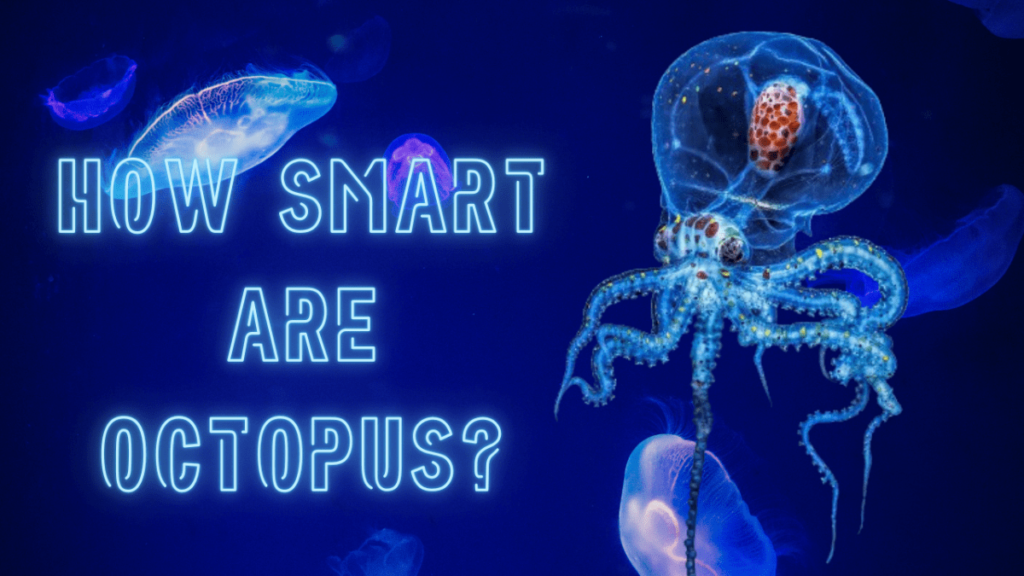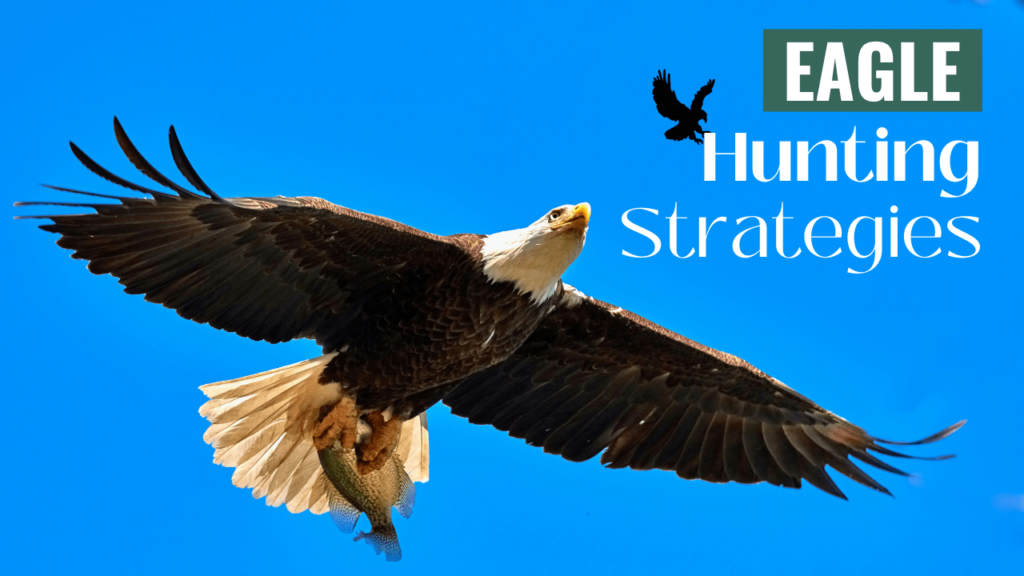Dolphins are renowned for their remarkable intelligence, a trait that has fascinated scientists and animal enthusiasts alike. These marine mammals exhibit a range of complex behaviors that suggest a high level of cognitive ability. This article delves into the depths of dolphin intelligence, exploring how smart are dolphins, their communication skills, and how they compare to other intelligent species, including humans.
We also included Dolphin as one of the Smartest Animals in the World
Understanding Dolphin Intelligence
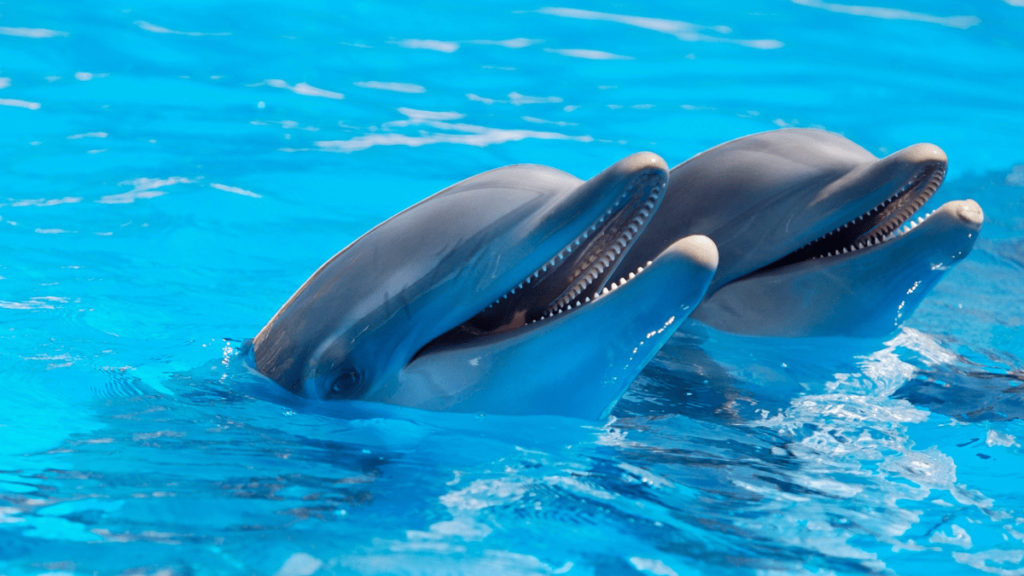
Dolphin intelligence refers to the advanced cognitive abilities that dolphins exhibit, which are often compared to those of higher mammals like primates and elephants. Scientists measure dolphin intelligence through various methods, including problem-solving tasks, communication studies, and brain analysis. The study of dolphin intelligence is crucial as it helps us understand their behavior, social structures, and their capacity for emotions and problem-solving.
How Smart Are Dolphins?
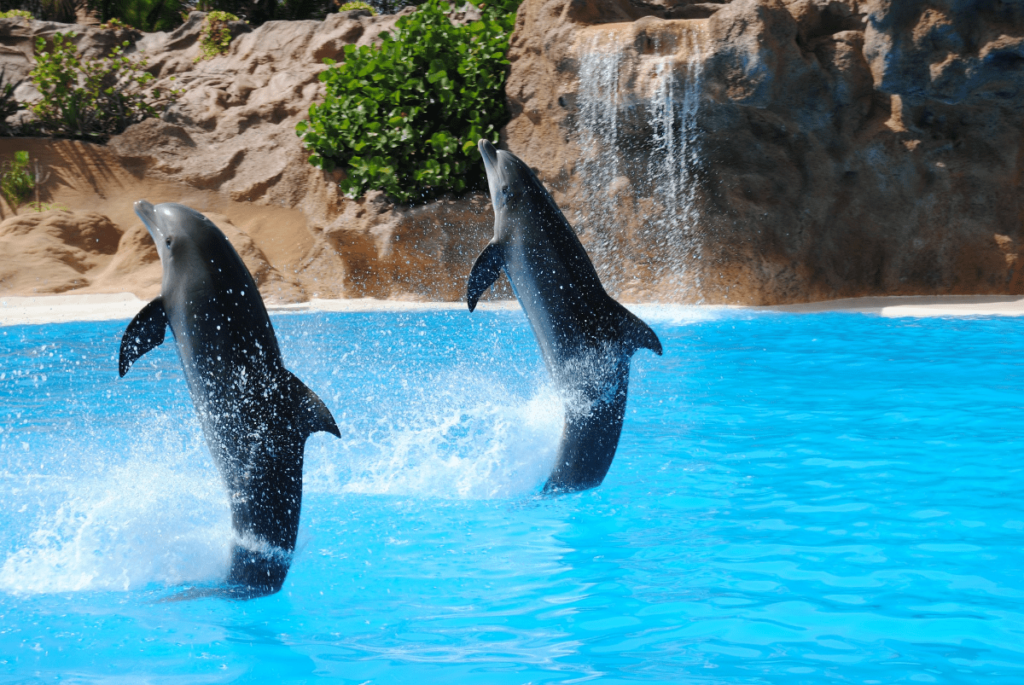
When discussing how smart are dolphins, it’s essential to recognize several key indicators. Dolphins display a high level of self-awareness, problem-solving skills, and complex social interactions. For instance, they can recognize themselves in mirrors, a trait that is often associated with self-awareness. Studies have shown that dolphins can solve complex tasks and learn new behaviors through observation, demonstrating a high level of dolphin intelligence.
Dolphin Information Table
| Common Name | Dolphin |
| Scientific Name | Delphinidae |
| Family Name | Delphinidae |
| Type | Mammal |
| Size (Head and Body Length) | 1.8 – 4.2 meters (5.9 – 13.8 feet) |
| Weight | 50 – 200 kg (110 – 440 lbs) |
| Size Relative to a 6-Ft Human | Varies; typically around 1.5 times larger |
| Diet | Fish, squid, crustaceans |
| Average Lifespan in the Wild | 20 – 60 years |
| Habitat | Oceans, seas, rivers |
| Group Name | Pod |
| Found In | Worldwide (marine) |
| Conservation Status | Various species listed as vulnerable or near threatened |
Dolphin Brain Size and Structure

The brain of a dolphin is unique in its structure and size, contributing significantly to their intelligence. Dolphins have a brain-to-body ratio that is comparable to humans, and their brains possess a highly developed neocortex and limbic system. The neocortex is associated with higher-order thinking and problem-solving, while the limbic system plays a crucial role in emotion and social behavior. This advanced brain structure supports the diverse and sophisticated behaviors exhibited by dolphins.
Examples of Their Cleverness
1. Advanced Communication Skills
Dolphins possess one of the most sophisticated communication systems in the animal kingdom. They use a variety of clicks, whistles, and body movements to convey information. Each dolphin has a unique signature whistle that functions like a name, allowing individuals to call and recognize each other. Studies have shown that dolphins can even mimic the sounds of other dolphins, demonstrating their ability to adapt and learn new forms of communication.
2. Tool Use and Problem Solving
Some dolphin species exhibit remarkable problem-solving skills and the use of tools. For instance, bottlenose dolphins in Shark Bay, Australia, use marine sponges to protect their snouts while foraging on the seafloor. This behavior not only highlights their ability to use objects in their environment but also suggests a level of cultural transmission, as young dolphins learn this technique from their mothers.
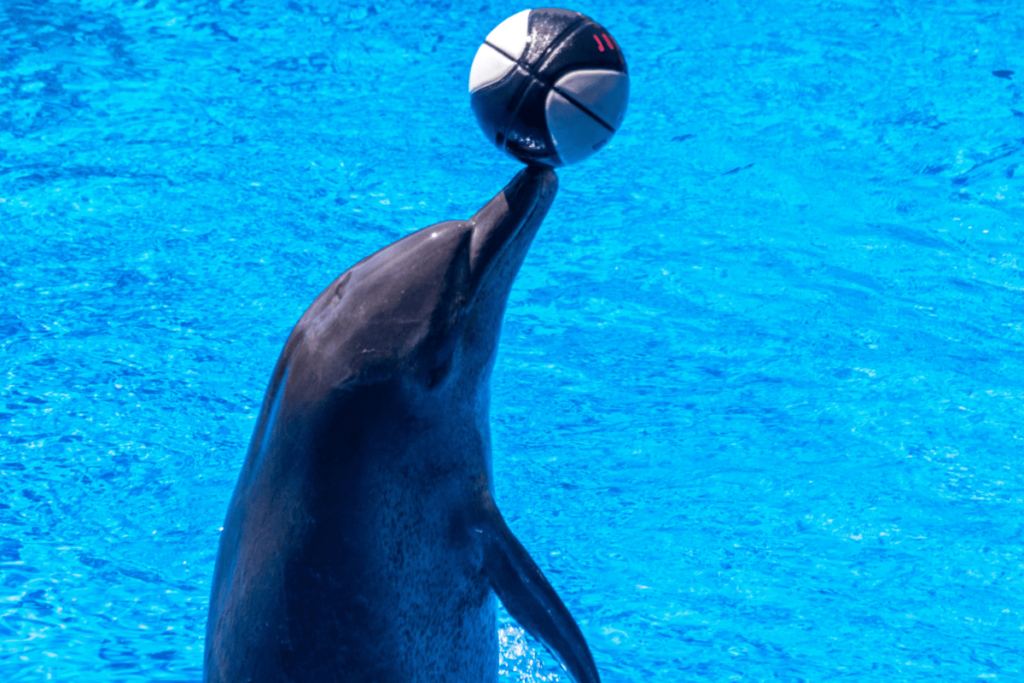
3. Complex Social Structures
Dolphins live in intricate social groups called pods, which can range from a few individuals to over a hundred. Within these pods, dolphins display cooperative behaviors, such as hunting in unison and caring for injured members. Their social interactions are characterized by empathy, as dolphins have been observed helping each other in distress and even engaging in play that strengthens social bonds.
4. Self-Awareness and Reflection
Dolphins are one of the few non-human animals that demonstrate self-awareness. In mirror tests, where dolphins are marked with a colored spot and then exposed to a mirror, they have been observed using the mirror to inspect and remove the mark from their bodies. This behavior indicates a high level of self-recognition and cognitive sophistication.
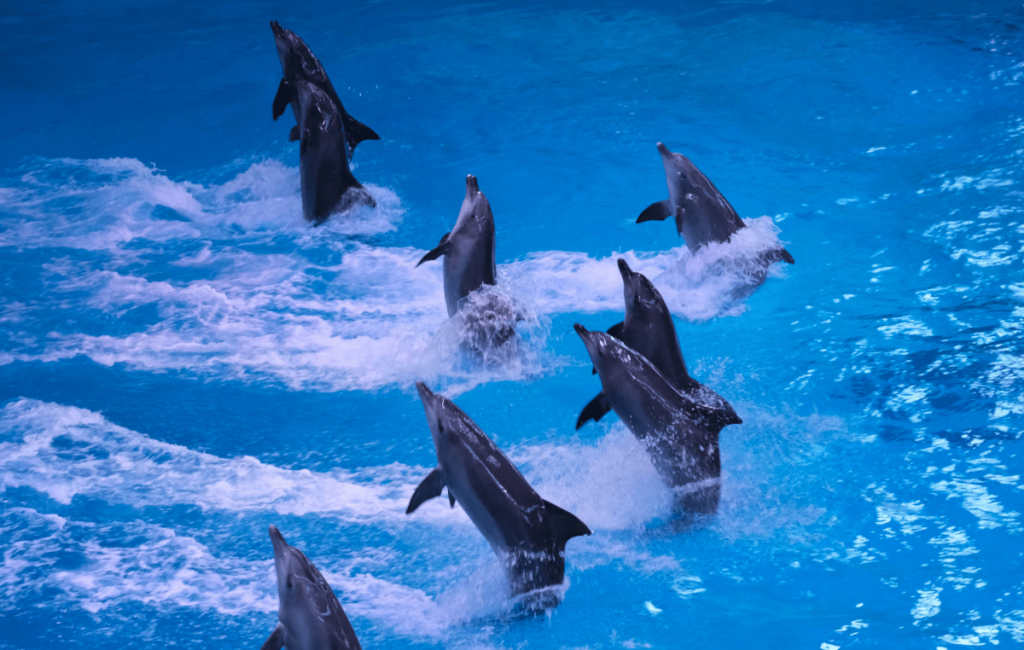
5. Exceptional Memory
Dolphins have impressive memory capabilities, both in terms of remembering individual dolphins and recalling past events. In one study, dolphins were able to remember the signature whistles of other dolphins they had not encountered for over 20 years. This long-term memory is crucial for maintaining social relationships and navigating their complex social networks.
6. Problem-Solving During Foraging
Dolphins display advanced problem-solving skills when hunting for food. For example, in some regions, dolphins use a technique called “strand feeding,” where they work together to herd fish onto mudflats during low tide. This cooperative strategy requires precise timing and coordination, showcasing their ability to plan and execute complex tasks.

7. Playful Behavior and Learning
Dolphins are known for their playful nature, which is not just for entertainment but also a sign of their intelligence. They engage in activities such as surfing on waves, playing with objects, and interacting with other species. Play serves as a way for dolphins to learn new skills, strengthen social bonds, and stimulate their cognitive abilities.
8. Ability to Learn New Behaviors
Dolphins have shown a remarkable ability to learn and perform new behaviors, both in the wild and in captivity. For instance, dolphins can be trained to follow commands, perform tricks, and even participate in scientific research. Their ability to learn from human trainers and other dolphins demonstrates their flexibility and intelligence.
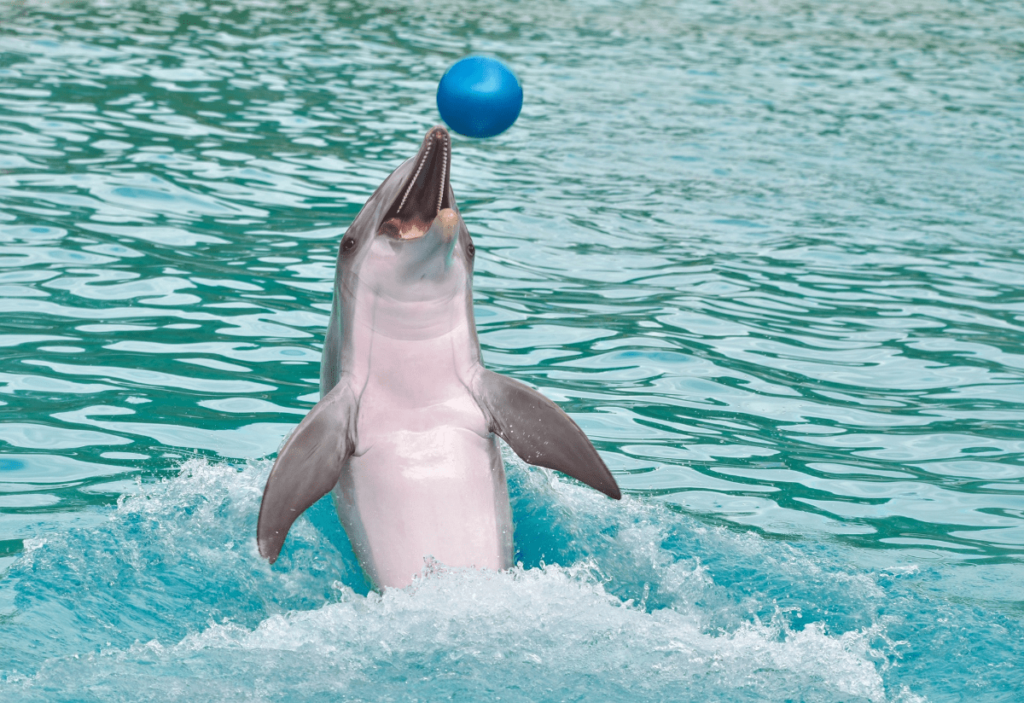
9. Emotional Understanding and Empathy
Dolphins exhibit a range of emotions and empathy towards one another. They have been observed displaying behaviors such as mourning deceased companions, comforting distressed pod members, and showing excitement during social interactions. This emotional depth highlights their advanced social cognition and capacity for empathy.
10. Coordination and Teamwork
Dolphins are highly skilled at working together as a team. In hunting scenarios, they employ sophisticated techniques, such as driving fish into tight schools or creating bubble nets to trap prey. This level of coordination requires communication, planning, and cooperation, underscoring their intelligence and social complexity.

Case Studies on Dolphin Intelligence
The Sponging Behavior in Shark BayIn Shark Bay, Australia, researchers have documented bottlenose dolphins using sea sponges as tools while foraging. This behavior, which involves using sponges to protect their snouts from sharp objects on the seafloor, is a prime example of tool use in the wild. The practice is learned and passed down through generations, highlighting the dolphins’ capacity for cultural transmission.
The Mirror Test StudyThe mirror test, conducted in various settings, has provided evidence of self-recognition in dolphins. In these studies, dolphins were marked with a non-toxic dye and then exposed to a mirror. The dolphins examined the marks on their bodies, demonstrating an understanding that the reflection was of themselves, a clear sign of self-awareness.
Cooperative Hunting ObservationsResearchers have observed dolphins in the wild using cooperative hunting techniques. In these studies, dolphins worked together to herd schools of fish, showcasing their ability to communicate and strategize. This cooperative behavior is an indication of their complex social structures and cognitive abilities.
Imitation Learning in CaptivityIn captivity, dolphins have been observed mimicking human behaviors and other dolphin actions. These studies show that dolphins can learn new behaviors through imitation, highlighting their cognitive flexibility and ability to adapt to different stimuli.
Altruistic Behavior Toward HumansThere are numerous documented instances of dolphins helping humans in distress. For example, dolphins have been known to guide lost swimmers back to shore and assist injured individuals. These acts of altruism demonstrate the dolphins’ empathetic and cooperative nature.
Comparison with Other Intelligent Animals
The question are dolphins smarter than humans? often arises in discussions of animal intelligence. While dolphins possess remarkable cognitive abilities, comparing their intelligence directly to that of humans is challenging due to the differences in species-specific traits. However, how smart are dolphins compared to humans can be explored through their problem-solving skills, communication, and social behaviors. Dolphins’ intelligence is comparable to that of primates, with some unique traits adapted to their aquatic environment.
Dolphins aren’t the only intelligent aquatic creatures. Discover more about their oceanic counterparts in our article, How Smart Are Octopuses?
Conservation and Research Efforts
Understanding dolphin intelligence is not only fascinating but also vital for conservation efforts. By studying their cognitive abilities, researchers can better understand their needs and the threats they face. Conservation programs that focus on dolphin habitats and protection are essential for preserving these intelligent creatures. Ongoing research continues to uncover new aspects of dolphin intelligence, contributing to more effective conservation strategies.
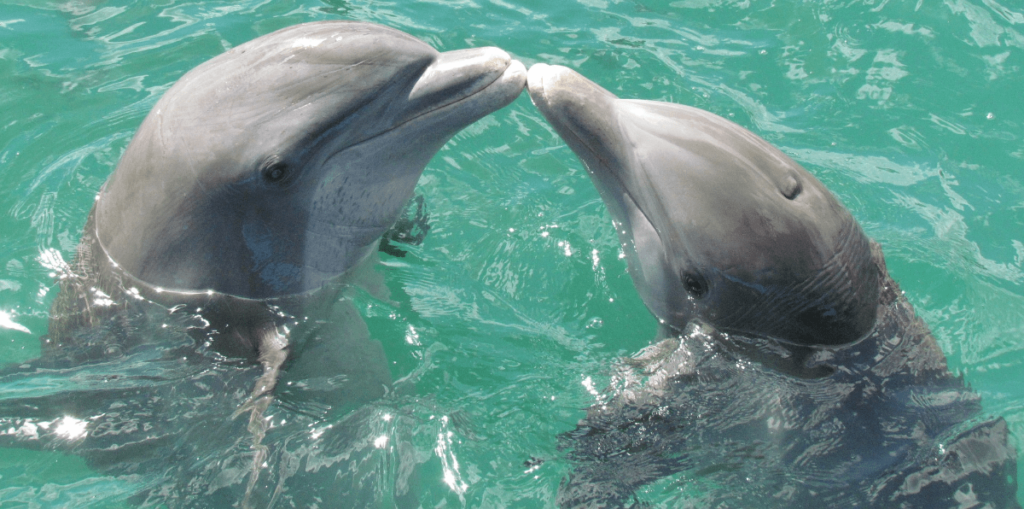
Conclusion
In summary, dolphins are among the most intelligent animals on the planet, displaying advanced cognitive abilities, complex communication, and problem-solving skills. Their intelligence is evident in their social interactions, learning capabilities, and tool use. As we continue to explore and understand the depths of dolphin intelligence, it becomes increasingly important to support research and conservation efforts to ensure the well-being of these remarkable marine mammals.
Have you ever witnessed dolphin behavior that left you in awe? Share your experiences and thoughts in the comments below, and don’t forget to share this article with fellow animal lovers!


